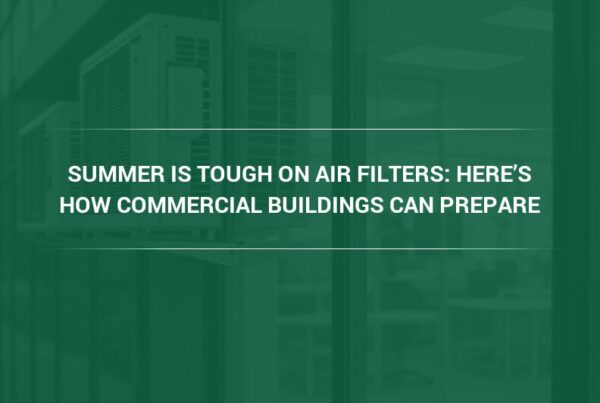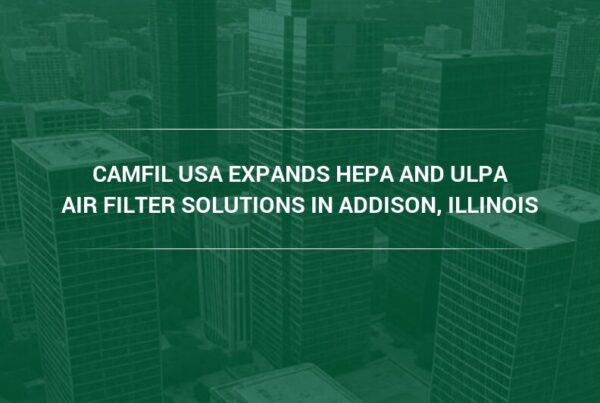The EPA is reconsidering a rule against toxic emissions from power plants. Learn how this could impact indoor air quality and drive demand for residential, commercial and industrial air filters.
Environmental Policy News – In August this past year, the U.S. Environmental Protection Agency (EPA) announced it would be revisiting a rule designed to control air pollution emissions from power plants, specifically, one that places strict limits on the release of mercury and other toxic pollutants into the air. If the agency pushes through with a rollback of this rule, it could drive increased demand for residential, industrial, and commercial air filters, especially among industrial and commercial buildings located close to power generation facilities.
The announcement came barely a week after the EPA announced a proposal to change regulations for greenhouse gas emissions produced by power plants, which would give individual states more discretion to set their own targets for reducing greenhouse gases rather than impose a federal goal.
For years, the EPA’s Mercury and Air Toxics Standards (MATS) rule has required power generation facilities to limit their emissions of toxic pollutants such as mercury, arsenic and other metallic elements. Now the agency has stated it would send a draft explaining a policy change to loosen this rule to the White House, which, in effect, would begin the review process.
“Power plants that depend on the burning of fossil fuels are a concern for the environment and health of the public,” points out Camfil USA’s Charlie Seyffer, Manager of Marketing & Technical Materials for commercial air filters and 37-year ASHRAE member and active committee participant. “The process generates hydrocarbon gases, volatile organic compounds, and impurities such as mercaptans, sulfur oxides, mercury, and arsenic.
EPA Looking into Impact of Mercury and Other Pollutants on Outdoor and Indoor Air Quality
According to EPA spokeswoman Molly Block, the agency is evaluating whether any standards limiting the emission of mercury and other pollutants by power plants are appropriate and necessary at the federal level. Critics, however, argue that rolling back these regulations would affect outdoor and indoor air quality, putting millions of Americans at risk of developing respiratory disease and heart problems.
Block added that the EPA will also re-evaluate the benefits associated with reducing toxic pollutants that are not explicitly the subject of the rule at hand, known as co-benefits. The agency has already proposed changes to what it considers are secondary benefits under the Trump administration.
For example, under the Obama administration, the EPA had considered the advantages of cutting air pollution emissions that would reduce smog levels under the Clean Power Plan as being co-benefits. The Trump administration has since proposed replacing the Clean Power Plan with the Affordable Clean Energy rule, a controversial program that has been accused of allowing automakers and power plants to increase their air pollution emissions that contribute to smog and premature deaths.
The EPA, however, defended the rule, arguing that it only focuses on greenhouse gases and that other types of air pollution are covered under other environmental regulations.
EPA Already Making Progress Toward Easing Dependence on High Efficiency Filtration Systems
Senator Tom Carper (D-Del), a ranking member of the Environment and Public Works Committee, quickly sent a letter to the EPA following the announcement asking the agency not to change this emissions rule. Carper pointed out that it has already made great progress in reducing levels of airborne pollutants, potentially saving thousands of lives, more so if combined with the use of high efficiency filtration systems at home.
Carper added that the decision to re-evaluate the rule is particularly irresponsible, as toxic pollutants like mercury and arsenic are known to pose serious health risks, especially on children, expecting mothers, individuals with existing conditions, and the elderly.
In a statement, Carper reiterated that the Mercury and Air Toxics Standards (MATS) Rule is exceeding expectations and that changing it would be the height of government irresponsibility. He added that he had repeatedly warned the Trump Administration not to touch MATS, which receives widespread support from environmental groups, health organizations, state governments, businesses, and a bipartisan group of legislators.
What Does This Mean for the Air Purifier Industry?
If the EPA rescinds the MATS Rule, the air purifier industry may have to face increased demand for air filter systems as concerns over air pollution levels from power plants rise.
It should also be noted that MATS is not the only rule the EPA is considering changing. Earlier this year, the agency announced it is considering a rollback of vehicle emissions and fuel economy standards implemented under the Obama Administration, which set the recommended fuel economy at 54.5 miles per gallon until 2025. Aside from reducing air pollution emissions, this would also limit carbon emissions and slow down climate change.
The EPA announcement was slammed for being part of a greater effort by the Trump administration to ease emissions regulations on the auto manufacturing industry, which has long protested the strict regulation for forcing them to make trucks, vans, and SUVs equipped with cleaner, but more expensive engine technology.
By rolling back fuel standards for cars and trucks, however, the federal government may find itself in conflict with states like California, which has already turned to a special waiver that allows it to independently set stricter air pollution rules. According to state officials, the EPA’s proposed rollback is all but guaranteed to worsen the already severe air pollution in the country’s major cities.
In recent years, California has been on an aggressive campaign to solve its air pollution woes. In the latest State of the Air report by the American Lung Association, eight out of the 10 cities with the worst air pollution are in California.
Preparing for Smog with Home Air Filtration Systems
The most common manifestation of air pollution caused by power plants as well as mobile sources like cars and trucks is smog. Smog contains all kinds of toxic solid and liquid particles, chemical gases, and volatile organic compounds (VOCs), all of which can easily penetrate and linger in homes without home air filtration systems.
“Long-term exposure to particulate matter can induce respiratory disease and reduce heart function,” said Seyffer . “PM2.5 is especially dangerous as these pollutants are small enough to enter the smallest airways of the lungs and cross into the bloodstream, reaching vital organs.”
Choosing Commercial and Home Air Purification Systems
Concerns over air quality have prompted home and building owners to turn to commercial and home air purification systems to prevent smog particles, exhaust fumes, and other airborne pollutants from circulating inside indoor spaces. While most people think that the simplest thing they can do during times when ambient air quality is particularly bad is to stay indoors, even a sealed home can have gaps and cracks for air pollution to enter.
Furthermore, this ignores the fact that air pollution in homes and buildings also comes from indoor sources such as cooking, heating, and lighting, as well as materials like furniture, paints, varnishes, and cleaning products. Even the soil can produce radon—a toxic gas second only to cigarette smoke as the leading cause of lung cancer.
As long as air pollution continues to be a problem, the demand for home air filters will also be there. We recommend working with a reliable air filter vendor or manufacturer to first understand your contaminant problems and measure the size of your rooms or home to arrive at the best possible air filter solution for the job.
At Camfil USA, we take our job of protecting families and workers from air pollution seriously. Talk to our team to learn more about our commercial air filtration systems and high efficiency air filters, or browse our extensive product catalog to order any of our air filter systems.
Media Contact:
Lynne Laake
Camfil USA Air Filters
T: 888.599.6620
F: Friend Camfil USA on Facebook
Y: Watch Camfil Videos on YouTube
Source:



